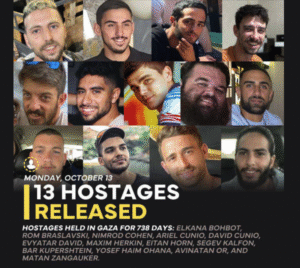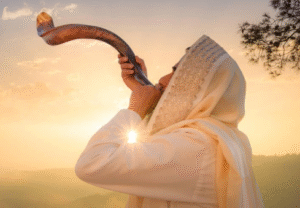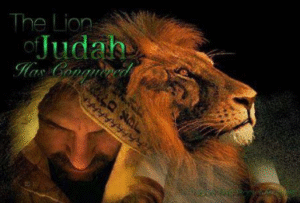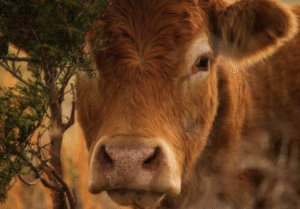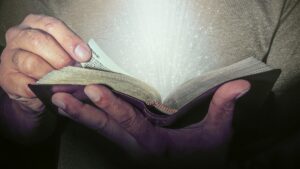
Covenant Faithfulness and the Pattern of Redemption: From Isaiah’s Oracle to Joshua’s Charge By: Chaim Malespin
Covenant Faithfulness and the Pattern of Redemption:
From Isaiah’s Oracle to Joshua’s Charge
By Chaim Malespin
“From Philistia to Hamas: Isaiah’s Prophecy in Context”
Isaiah 14:29–32 (the Haftarah portion) delivers an oracle against Peleshet (Philistia), referred to as “Palestina” in older translations. The Hebrew term פלשת (Peleshet) originally denoted the Philistine coastal plain (from Gaza up to Ekron and Lydda)
. (Notably, the Greeks called Philistia Palaistinē, giving us Palestine but nothing to do with the modern-day Arabs that live there that call themselves Palestinians, possibly the same judgments.
). In this prophecy, the Philistines are warned “Rejoice not, whole Peleshet” at the breaking of “the rod” that struck them. Historically, the Philistines might have rejoiced when a Judean king died – thinking Judah was weakened – but Isaiah cautions that from the “serpent’s root” will come an even more potent adversary, “a fiery flying serpent” (שרף מעופף)
We call it a predator drone today. According to rabbinic and scholarly insight, the “serpent” symbolized King Uzziah of Judah who had humbled Philistia, and the “fiery serpent” is his successor Hezekiah, whose reign would be even more devastating to Philistine ambitions. Indeed, Hezekiah “smote the Philistines as far as Gaza” (2 Kings 18:8), fulfilling Isaiah’s words. The text vividly declares: “Out of the serpent’s root shall come forth a viper, and his fruit shall be a flying fiery serpent” (Isa. 14:29). The Septuagint (LXX) renders “Philistia” as γῆ ἀλλοφύλων – “land of foreigners”, reflecting how the Philistines were seen as foreign invaders in the Holy Land. Spiritually, this prophecy shows Elohim’s sovereignty over nations. The Philistines’ gloating at Judah’s distress would be short-lived – a message equally relevant today. We can see a modern parallel: Gaza, home to the group Hamas (whose very name in Hebrew means “violence” or חמס, cf. Gen. 6:11), has often rejoiced in Israel’s suffering. Yet Isaiah’s oracle warns that any premature celebration by the enemies of Zion will turn to lament. “Wail, O gate; cry, O city; melt away, all you of Philistia” (Isa. 14:31) – these words portended disaster for ancient Gaza and its cities. In our day, we have witnessed how violent factions like Hamas ultimately face the severe judgment of history and the Elohei Yisrael (God of Israel). Just as Philistia’s false security was shattered, so modern terror groups will not escape divine justice. The prophecy ends with a powerful affirmation: “YHWH has founded Tzion, and in her the afflicted of His people will find refuge” (Isa. 14:32). In other words, Elohim Himself establishes His covenant people’s security. No matter the threats – whether from ancient Philistines or modern פלשתים (Pelishtim) – the promise stands: “The Lord will build up Zion” and the faithful will take shelter in Him.
“Joshua’s Call: Cling to YHWH, Reject the False Gods” Centuries earlier, Yehoshua (Joshua) ben Nun charged Israel with a similar message of covenant fidelity. In Joshua 23:7–13, as he neared the end of his life, Joshua warned the tribes not to mix with the surviving pagan nations nor even “make mention of the names of their elohim”.
He urged Israel to cling to YHWH Elohei Yisrael just as a wife clings to her husband – with exclusive devotion. Joshua emphasized that it was Elohim who fought for Israel, driving out mighty nations before them, in fulfillment of the covenant. This resonates with the pattern we saw in the Exodus: Elohim defeated the false gods of Egypt to redeem His people, and now Israel must not lapse into serving those very idols. Joshua said, “Take diligent heed… to love YHWH your Elohim” (Josh. 23:11), because if Israel turned back to the idols, Elohim would cease to drive out their enemies and those nations would become “snares… scourges in your sides and thorns in your eyes” (Josh. 23:13). In other words, breaking the covenant would forfeit the divine protection that had given them victory.
Finally, Joshua gathered the people at Shechem and issued a stirring challenge: “Choose this day whom you will serve” (Josh. 24:15). He recounted the pattern of redemption – how YHWH (יהוה) had delivered (hoshia) them from Mitzrayim (Egypt) and preserved them through the wilderness into the Promised Land. In light of such grace, Israel had to make a decisive choice: the foreign gods of Mesopotamia and Egypt, or YHWH who had proven Himself. Joshua’s famous declaration rings with resolve: “As for me and my house, we will serve YHWH” (Josh. 24:15). The people answered that they too would forsake all idols: “Far be it from us to forsake YHWH to serve other gods; for YHWH our Elohim is He who brought us and our fathers up out of the land of Egypt, from the house of bondage…we also will serve YHWH, for He is our Elohim” (Josh. 24:16–18). This covenantal oath underscores a truth that carries into the New Covenant: having been redeemed by Elohim’s mighty hand, the Kehila (community of believers) must remain loyal to Him alone. In Greek, the word for serve/worship used in the Septuagint is latreuō (λατρεύω), implying the sacred service due only to God. Joshua essentially calls Israel to be a holy ἐκκλησία (ekklesia) – an assembly set apart for YHWH. Like Joshua, we too must renounce the “gods” of our age (materialism, immorality, false religions) and pledge our emunah (faithful allegiance) to Adonai alone.
“The Ten Plagues: Judging the Gods, Revealing the Pattern of Redemption”
At the heart of Israel’s faith is the memory of the Exodus, when Elohim delivered His people from slavery “ביד חזקה ובזרוע נטויה” – “with a mighty hand and outstretched arm.” This pattern of redemption (תבנית הגאולה) was most dramatically displayed in the Eser Makkot – the Ten Plagues of Egypt. Each plague was not random punishment, but a strategic judgment against the false gods of Mitzrayim.
As the Torah says, “On all the gods of Egypt I will execute judgments – I am YHWH” (Ex. 12:12). The plagues thus “testify that the one true Elohim was far greater than all the multiple gods of the Egyptians”.
Let us briefly examine each plague, its symbolic imagery, and how it prophetically parallels modern spiritual battles.
Plague 1 – Waters Turned to Blood (דָם, Dam): In the first plague, the life-giving waters of the Nile were turned to blood (Ex. 7:20-21). The Nile was worshiped as a god – variously called Hapi or associated with Osiris – and Egypt depended on its floods for prosperity. When Elohim transformed the Nile to blood, He demonstrated His supremacy over this deity. For seven days the waters remained undrinkable, a complete judgment on Egypt’s source of life. Modern parallel: Just as Elohim showed mastery over the Nile, so can He judge our modern “gods” of economy and natural resources. Think of how sudden ecological disasters or disruptions (red tides, polluted rivers) humble nations today – reminding us that no “river” of provision is secure unless Elohim wills it. Spiritually, this plague warns against trusting in material sustenance (our “Nile”) instead of Elohim. He can dry up false sources of life to lead us to the true source. (Hebrew Scripture: Exodus 7:17 – “בזאת תדע כי אני יהוה” / “In this you shall know that I am YHWH.”)
Plague 2 – Frogs (צְפַרְדֵּעַ, Tzfardeia): Next, swarms of frogs came up from the Nile and infested every house, bed, and oven (Ex. 8:3-4). This plague targeted Heqet, the Egyptian goddess of fertility who was depicted with a frog’s head. Frogs, normally a symbol of life and fruitfulness in Nile culture, now became a source of defilement and misery. Elohim has a sense of holy irony – the creature they revered became a curse. Pharaoh’s magicians mimicked this plague (adding more frogs!) but could not remove them. Only when Pharaoh begged Moses did the frogs cease, showing that Elohim alone controls creation. Modern parallel: This vivid image of frogs overrunning Egypt can mirror the overwhelming invasion of unwanted consequences when a society idolizes fertility, sex, or pleasure. Today we see cultures drowning in the byproducts of sexual idolatry – moral impurity intruding into every “house.” Yet, just as Elohim removed the frogs, He can cleanse those who repent from the frogs of immorality. (Hebrew: Exodus 8:8 – “העתירו אל־יהוה” / “Plead with YHWH to remove the frogs.”) Plague 3 – Lice (or Gnats) from the Dust (כִּנִּים, Kinim): Without warning, Elohim told Aaron to strike the dust of the ground, and the dust became lice swarming on man and beast (Ex. 8:16-17). In Egyptian religion, the earth god Geb was revered as the giver of life’s bounty. Yet now the very dust of the earth – which man was created from – became a source of loathsome affliction.
This plague was a direct rebuke to Geb, showing that the Lord of Israel rules even the soil of Egypt. Notably, the magicians failed to replicate this and exclaimed “This is the finger of Elohim!” (Ex. 8:19), acknowledging a power beyond their occult tricks.
Modern parallel: Lice are small, humble creatures, yet innumerable; this plague humbled Egypt’s pride. In our day, microscopic viruses or tiny pests can likewise shut down nations, defying human pride and technology. It reminds us that from dust we came and to dust we return – we must humble ourselves before the Master of the earth. Our modern “earthly” worldview, which denies the Creator, can be shattered by something as small as a microbe. (Hebrew: Exodus 8:18 – the magicians: “אצבע אלהים הוא” / “It is the finger of Elohim!”) Plague 4 – Swarms of Flies (עָרוֹב, Arov): The fourth plague brought swarms of flies (or possibly a mixture of biting insects) that tormented the Egyptians and ruined the land (Ex. 8:21-24). Here Elohim made a distinction – no swarms came upon Goshen where His people dwelt, “so that you may know I, YHWH, am in the midst of the land” (Ex. 8:22). The flies may allude to Khepri, the beetle-headed god of sunrise and rebirth (and Beelzebub was later called “Lord of the Flies”). The separation (havdalah) between Goshen and Egypt showed Elohim’s covenant protection. Even Pharaoh began to bargain, revealing he recognized YHWH’s power.
Modern parallel: Flies represent corruption and demonic harassment. We see the havdalah even now – Elohim puts a hedge around those who are His, even as spiritual “flies” vex the world. In a moral sense, corruption and false worship (which Beelzebub symbolizes) breed decay in societies. Yet Elohim preserves a remnant (like Goshen) who remains undefiled. (Hebrew: Exodus 8:23 – “וְהִפְלֵיתִי בַּיּוֹם הַהוּא אֶת-אֶרֶץ גֹּשֶׁן” / “I will set apart the land of Goshen on that day.”) Plague 5 – Pestilence on Livestock (דֶּבֶר, Dever): Next, a deadly plague struck the Egyptian cattle, horses, camels, and flocks (Ex. 9:3-6). This plague struck at the heart of Egypt’s wealth and military strength, as well as their gods like Hathor (goddess depicted as a cow) and the sacred bull **Apis】. “All the livestock of Egypt died” in the fields, causing economic disaster – food supply, farming, transportation, even their war chariots’ horses were decimated. Yet once more, Israel’s cattle were unharmed (Ex. 9:6-7), proving YHWH’s covenant distinction. Modern parallel: This corresponds to economic judgment. When a nation’s economy or “products” (symbolized by livestock) collapse under disease or disaster, it exposes the impotence of its idols of prosperity. Today’s “cattle” could be our industries and stock markets – how quickly a financial plague can topple false gods of money. Indeed, when Elohim sends a downturn or famine, it challenges us: do we rely on Mammon or on Elohim our Provider? (Hebrew: Exodus 9:4 – “וְהִפְלָה יְהוָה… בֵּין מִקְנֵה יִשְׂרָאֵל וּבֵין מִקְנֵה מִצְרָיִם” / “YHWH will make a distinction between Israel’s livestock and Egypt’s.”) Plague 6 – Boils and Blisters (שְׁחִין, Shechin): Without prior warning, Moses took ashes from a furnace and tossed them heavenward in front of Pharaoh, and they became a fine dust causing infectious boils on man and beast throughout Egypt (Ex. 9:8-10). This plague directly attacked the Egyptian pantheon of health – deities like Thoth and Isis (goddess of medicine and peace) who were supposed to protect from illness
STAT.RICE.EDU. Even the magicians were so afflicted that they could not stand before Moses (Ex. 9:11), demonstrating the defeat of Egypt’s sorcerer-priests. The people were declared “unclean” by these oozing sores, disrupting the ceremonial rituals of their religion
STAT.RICE.EDU. Modern parallel: Boils represent personal affliction and public health crises. When widespread disease strikes (be it plague, pandemic, or health catastrophe), it humbles a nation’s pride in science and medicine. In recent times we have seen high technology societies brought low by tiny viruses – our “gods” of medical science confounded. As in Egypt, such crises reveal human helplessness and can lead us to acknowledge the Rophecha – YHWH our Healer. Spiritually, boils can symbolize the outbreak of sin’s corruption in the body (cp. Isaiah 1:6), which only Elohim’s grace can cure. (Hebrew: Exodus 9:14 – “בַּעֲבוּר תֵּדַע כִּי אֵין כָּמֹנִי בְּכָל-הָאָרֶץ” / “So that you may know that there is none like Me in all the earth.”) Plague 7 – Hail and Fire (בָּרָד, Barad): With the seventh plague, Elohim upped the intensity. Moses, hand outstretched to heaven, summoned the worst hailstorm Egypt had ever seen – hail mingled with flashing fire (lightning) poured from the sky, shattering crops and killing any person or beast left outdoors (Ex. 9:22-26). This plague struck at Nut, the sky goddess, and Set, god of storms
STAT.RICE.EDU. It also destroyed the flax and barley, ruining Egypt’s clothing supply and libations
STAT.RICE.EDU. Remarkably, some Egyptians “feared the word of YHWH” and brought their servants and cattle indoors before the storm (Ex. 9:20) – showing that even amidst judgment, Elohim extended mercy to those who heeded the warning. The land of Goshen once again was spared any hail.
Modern parallel: This plague corresponds to natural disasters and climate events that expose the futility of false gods. Hail and fire from heaven bring to mind everything from literal hailstorms to meteors or military bombardment – Elohim can rain down destruction on the infrastructure humans trust in. We have seen how storms, quakes, and fires can cripple a nation in moments. In prophecy, Revelation echoes this plague with hail and fire mingled with blood (Rev. 8:7). The message: “There is none like Me in all the earth”, says YHWH.
No Baal or science can save when Elohim’s hand is stretched out. Yet, just as some Egyptians found refuge by obeying YHWH’s warning, individuals today can find safety in heeding His voice amid coming storms. (Hebrew: Exodus 9:27 – Pharaoh: “יְהוָה הַצַּדִּיק וַאֲנִי וְעַמִּי הָרְשָׁעִים” / “YHWH is righteous, and I and my people are wicked.”) Plague 8 – Locusts (אַרְבֶּה, Arbeh): Following the hail, Elohim sent an east wind that brought swarms of locusts, so many that “the land was darkened” and every green thing left from the hail was consumed (Ex. 10:14-15). This was an onslaught on Min, god of crops and fertility, and again on Set (protector of crops). The locust, a seemingly insignificant grasshopper, in massive numbers became an irresistible army of destruction. This taught even Pharaoh that Elohim is Lord of the harvest, not their idols – “By this, you will tell your sons and grandsons how I dealt harshly with the Egyptians, and you will know that I am YHWH” (Ex. 10:2).
Pharaoh’s officials, now desperate, pleaded with him to yield, saying “Don’t you realize Egypt is ruined?” (Ex. 10:7). Modern parallel: Locusts represent any invading army or consuming force that devours a nation’s sustenance. We might liken it to economic collapse, invading forces, or even ideologies that sweep through and strip a culture’s morality bare. In recent memory, literal locust plagues have hit regions of Africa and the Middle East, reminding us these ancient judgments are not mere legend. The prophetic parallel in our time might be a wave of darkness (spiritual locusts) obscuring truth and eating all fruit of righteousness in society. Yet Joel 2 prophesies that Elohim will “restore the years that the locust has eaten” when His people return to Him. Thus, even locust plagues drive us toward repentance and restoration. (Hebrew: Exodus 10:3 – “עַד-מָתַי מֵאַנְתָּ לֵעָנֹת מִפָּנָי” / “How long will you refuse to humble yourself before Me?”)
Plague 9 – Darkness (חוֹשֶׁךְ, Choshech): Without warning or human mediation, the ninth plague brought a thick darkness over Egypt for three days – a darkness so intense it could be “felt” and none of the Egyptians rose from their place for three days (Ex. 10:21-23). This struck at the very heart of Egypt’s religion: Ra, the sun god, was utterly vanquished. The sun, whom they called the giver of life and symbol of Pharaoh’s power, was blotted out by Elohim.
Only the Israelites “had light in their dwellings” (Ex. 10:23), a beautiful image of divine illumination amid judgment. In Egyptian mythology, the sun’s daily rising was victory over chaos – now YHWH plunged them back into primordial chaos to show “יְהוָה אֱלֹהִים אֱמֶת”, YHWH alone is the true God. Modern parallel: Darkness symbolizes spiritual blindness and despair. We live in a world where moral darkness can be felt – people groping without the light of truth. This plague foreshadows that in the end times, the kingdom of the beast will be thrown into darkness (Revelation 16:10). It challenges the modern obsession with human “enlightenment” apart from God. No scientific or philosophical “sun” can prevent the dark night of the soul that sin brings. But for the Kehila of Yeshua, who is the “Light of the world” (אור העולם), there will always be light in our dwellings. We are called to arise and shine even when gross darkness covers the peoples (Isaiah 60:1-2). (Hebrew: Exodus 10:23 – “וּלְכָל-בְּנֵי יִשְׂרָאֵל הָיָה אוֹר, בְּמוֹשְׁבֹתָם” / “But for all B’nei Yisrael, there was light in their dwellings.”) Plague 10 – Death of the Firstborn (מַכַּת בְּכוֹרוֹת, Makkat Bekhorot): The final plague was the most devastating and decisive. Elohim Himself would go forth at midnight and strike down the firstborn of every Egyptian – from the firstborn of King Pharaoh on his throne to the firstborn of the lowliest slave – as well as the firstborn of their cattle (Ex. 12:12, 29). This plague was judgment on Pharaoh’s pretensions to divinity, and on gods like Osiris (associated with life and death) and Isis who was protector of children. Pharaoh’s own firstborn, the heir and considered a god in waiting, died. “There was a great cry in Egypt, for there was not a house where there was not one dead” (Ex. 12:30). Meanwhile, the Israelites, by obeying Elohim’s command to sacrifice the Pesach lamb and mark their doorposts with its blood, were passed over and spared. Through the blood of the lamb, Elohim made a distinction between Egypt and Israel (Ex. 11:7). This final plague shattered Egypt’s pride and broke the chains of bondage, as Pharaoh finally drove the Israelites out. Modern parallel: The death of the firstborn represents ultimate judgment on evil and the false hopes of the enemy. In one night, the future of Egypt was cut off – a sobering reminder that the wages of sin is death. It also prefigures Yeshua the Messiah: the Lamb of God whose blood causes judgment to pass over us, and whose own death as the Bekhor (Firstborn) of all creation brings us redemption. Prophetically, this plague foreshadows the defeat of the adversary’s “firstborn” – all the chief powers of darkness – when Messiah returns. In our contemporary world, we might liken it to the sudden removal of the “firstborn” of evil regimes or terrorist groups. For example, when the head of a snake (the leadership of a violent movement like Hamas) is cut off, the body collapses. Ultimately, Elohim will remove the “firstborn of Satan’s kingdom,” bringing an end to the long night of weeping. “At midnight, YHWH struck down all the firstborn in the land of Egypt” (Ex. 12:29) – there is a coming midnight when Mashiach will judge the earth in righteousness. Yet, for those under the blood of the Lamb, it will be a night of vigil leading to liberation. (Hebrew: Exodus 12:13 – “וְרָאִיתִי אֶת־הַדָּם וּפָסַחְתִּי עֲלֵכֶם” / “When I see the blood, I will pass over you.”) Through all these plagues, Elohim systematically “executed judgments against all the gods of Egypt”, leading His people out in a mighty pattern of redemption. Each judgment had geographic and spiritual significance: the Nile Delta, the skies over Zoan, the fields of Goshen – all became battlegrounds where YHWH demonstrated His lordship. Likewise, in our days we can map these ancient plagues to geopolitical and spiritual arenas: the economies (water) turned to blood through wars and terror, the invasions of immoral ideologies (frogs) creeping into homes, the public health crises (boils), the natural disasters (hail, locusts), the seasons of confusion and nihilism (darkness), and the fall of tyrants (firstborn). Elohim is repeating the Exodus pattern in the earth today – shaking every false refuge. As Scripture says in Hebrews 12: “Yet once more I will shake not only the earth but also the heavens, so that what cannot be shaken may remain.”
“Tarshish, Sheba, and Midian: From Ancient Trade Routes to Modern Idols”
The Haftarah portion concludes with a question: “What will one then answer the messengers of the nation? That YHWH has founded Tzion” (Isa. 14:32). This implies that surrounding nations will inquire about God’s work in Israel. Throughout the prophets, we see distant lands like Tarshish, Sheba, and Midian drawn into God’s story. These ancient locales had geographic significance: Tarshish (תַּרְשִׁישׁ) was a far-off maritime power (possibly Spain) known for its ships and trade; Sheba (שְׁבָא) in Arabia or Africa famed for wealth, spices, and a queen who sought Solomon’s wisdom; Midian (מִדְיָן) in the Arabian desert, a caravan hub and also a source of idolatry and opposition (recall the Midianites in Moses’ and Gideon’s time). The prophets often envision treasures and people coming from Tarshish, Sheba, and Midian to honor YHWH (e.g. Isaiah 60:5-7, Psalm 72:10,15). What do these mean for us? Tarshish can symbolize the global economic powers and trade routes. Today’s “ships of Tarshish” are the vast networks of commerce that span the seas. Will they serve the purposes of Elohim or of greed? Revelation 18 laments the fall of the mercantile Babylon – the Tarshish of the end times – when merchants weep as their cargo can no longer be sold. We must beware the idolatry of trade and wealth. Sheba represents the wealth of nations and the search for wisdom. The Queen of Sheba came to Jerusalem seeking truth; in the last days, the wealth of Sheba (gold and incense) is prophesied to be brought to glorify God. Spiritually, Sheba challenges us: will the wealthy of this world use their resources to seek YHWH’s wisdom and bless His people, or use it in false worship? Jesus (Yeshua) said “The Queen of the South (Sheba) will rise in judgment against this generation, for she came from the ends of the earth for Solomon’s wisdom – and behold, One greater than Solomon is here” (Matt. 12:42). Midian symbolizes both opposition and eventual homage. Isaiah 60:6 foresaw Midian and Ephah bringing gifts to Israel. Yet Midian also recalls those who seduced Israel at Peor (Numbers 25) and opposed them in Judges 6. In a modern sense, Midian’s territory is in Arabia – we see both hostile forces from that region and the potential of Arab nations coming to acknowledge the Elohim of Israel. Indeed, some Gulf states (heirs of Sheba and Midian) are now making peace with Israel and could even partake in building a peaceful future. This is a token of the prophetic hope that “the wealth of the Gentiles shall come” (Isa. 60:5) and “the sons of the foreigner shall build your walls” (Isa. 60:10). And what of “modern-day enemies like Hamas”? They occupy the very geography of Philistia addressed by Isaiah – Gaza. Just as Elohim broke the pride of Philistia, we have faith He will remove the threat of Hamas and similar enemies. We have witnessed in recent history swift changes: oppressors toppled, terrorist leaders eliminated (much as the firstborn of Egypt were struck). These are sobering works of judgment that echo the Exodus pattern. The fall of such enemies opens the door for the afflicted of God’s people to find refuge (Isa. 14:32). We are living in prophetic times where nations align or oppose God’s covenant purposes. The ancient names – Tarshish (the West), Sheba and Dedan (Arabia/Africa), Gog of Magog (the far North), Persia (Iran) – are once again on the geopolitical stage. Yet in all this, our response is not fear, but faith and discernment. We interpret the news through the lens of Scripture, recognizing the same Yad YHWH (hand of the LORD) at work that was stretched out over Egypt.
“Walking in the Redemption Pattern: Holiness and Victory in YHWH”
The Exodus story and Joshua’s exhortations aren’t just ancient history; they form a prophetic template for our spiritual journey. In Hebrew thought, “ma’aseh avot siman l’banim” – the deeds of the fathers are signs for the children. Thus, the pattern of redemption repeats across generations. We, the Kehila of Yeshua, have experienced a personal exodus – Yeshua is our Passover Lamb, delivering us from bondage to sin and the “gods” of this age. By His blood, the judgment of the second death passes over us, and by His resurrection, He leads us through the Sea into new life. Now, having been “bought with a price”, we are called to be a holy people unto Elohim. Joshua’s voice speaks to us: “Cleave to YHWH your Elohim” – this is covenant language. The Hebrew דָּבַק (davaq), to cling, implies loyalty born of love. Our Brit Chadasha (New Covenant) calls us the Bride of Messiah; we must not flirt with idols or spiritual adultery. The apostle Paul in Greek echoes Joshua, urging believers, “τίς κοινωνία φωτὶ πρὸς σκότος?” – “What fellowship has light with darkness? What agreement has Messiah with Belial?” (2 Cor. 6:14–15). We cannot serve Elohim and idols. In place of the word “salvation,” we have embraced the richer concept of ge’ulah – redemption as a process and pattern: we were redeemed, we are being refined, and we await final redemption. Just as the plagues progressively broke Egypt’s grip, so Elohim in His mercy has been breaking the chains in our lives, one by one. Perhaps He has sent “mini-plagues” to topple our personal false gods – one day a career setback to humble our pride (blood in our Nile), another day a “swarm of flies” exposing hidden sin so we would repent. It is all the loving discipline of our Deliverer. Therefore, the proper response to Elohim’s mighty acts is what Joshua declared: “וְאָנֹכִי וּבֵיתִי נַעֲבֹד אֶת-יְהוָה” – “As for me and my house, we will serve YHWH” (Josh. 24:15). In place of Egyptian gods, we enthrone Yeshua (whose very name means Yeshu‘ah – salvation). Instead of the values of Canaan, we embrace the Torat YHWH (instruction of the Lord) as our light. We must be vigilant, for the spirit of idolatry is subtle. In our modern world, idols might not be golden calves but could be technologies, ideologies, or even personalities that claim our highest allegiance. Remember, Israel was tempted to syncretize – to “mention the names” of Canaan’s Baals and Asherahs (Josh. 23:7). The Kehila today faces pressures to compromise biblical truth with popular culture’s narrative. Joshua’s charge applies: do not even make mention of those idols approvingly; certainly do not swear by them. Rather, let the Shem YHWH (Name of the Lord) be always on our lips in reverence. We also learn from the Exodus pattern the importance of discernment and preparation. Before the final plague, Israel had to apply the blood, eat the Passover lamb in faith, and be ready to move. Likewise, we overcome “by the blood of the Lamb and the word of our testimony” (Rev. 12:11). We “apply” the blood by trusting wholly in Yeshua’s atonement. We partake of Se’udat Adonai (the Lord’s Supper) – our New Covenant Passover meal – with readiness, loins girded with truth. And we mark our households by dedicating them to YHWH, teaching our children as we sit in our homes and walk by the way (Deut. 6:7). Joshua said, “me and my house” – it’s not just individual, but familial and communal. The Kehila must stand as one holy nation, each home a little Goshen filled with light, even as deep darkness covers the earth. In these times, as we see prophecy unfolding and nations in turmoil, we take heart from Isaiah’s concluding promise: “YHWH has founded Zion, and the poor of His people shall take refuge in it” (Isa. 14:32). Zion for us represents the unshakable kingdom of God (Heb. 12:28). Elohim has founded His Kehila on the rock – “the stone the builders rejected” who is now our Messiah. The anawim (poor, humble ones) of His people trust in Him and are safe. No Philistine giant, no Midianite horde, no modern terrorist, no plague or darkness can snatch us from His hand. In the Elohim of Israel, there is victory. As Yeshua told us, “In the world you will have trouble. But take heart! I have overcome the world.”
Living the Legacy of Redemption
In summary, the Haftarah of Isaiah 14 and the words of Joshua align to teach us that Elohim alone is God, and He will redeem and defend His covenant people. The Exodus plagues reveal a pattern of redemption: judgement of false gods, separation of God’s people, and deliverance by blood and power. Joshua then calls us to covenantal fidelity in response to that redemption. We are to destroy every idol in our hearts, “incline our hearts to YHWH” (Josh. 24:23), and serve Him in sincerity and truth. Let us examine ourselves: Are we allowing any hametz (leaven) of idolatry or compromise to remain? The Apostle John closes his first epistle with the simple admonition: “Little children, keep yourselves from idols” (1 John 5:21). The Greek term for idol is eidōlon, implying anything seen as an image that replaces God. In our context, we resolve to keep ourselves from modern eidōla – whether that be the love of money, celebrity cults, nationalist pride above kingdom loyalty, or even an undue fear of the enemy. Instead, we heed the call to kedushah (holiness). Holiness means set-apartness – being in the world but not of it. Just as Israel was physically in Egypt but by the blood set apart from Egypt’s fate, we live in the midst of nations yet carry a distinct identity and ethic. We worship Elohim in the beauty of holiness, using the Hebrew praises and understanding our faith’s Hebraic roots, yet also speaking to the world in terms they can grasp (even as we sprinkled in Greek terms for theological depth). This balance allows us to be a light to the nations. Joshua’s generation declared, “YHWH Eloheinu we will serve, and His voice we will obey” (Josh. 24:24). May we declare the same with conviction. Our allegiance is to Elohim alone – not to Pharaoh’s system, not to Philistine arrogance, not to the idols of culture. And in that allegiance, there is Shalom and victory. When we align under the banner of YHWH Tzva’ot (Lord of Hosts), we can march forward, as it were, around the Jerichos of our day and see walls fall. We can face Goliaths in the valley and know the battle is YHWH’s. We can maintain hope even if enslaved in Babylon, knowing a new Exodus is coming. The pattern of redemption teaches us that after the darkness, the dawn breaks; after the death of the firstborn, comes a new birth of a nation. So it is now: the darkness in the world signals that the dawn of the Messiah’s kingdom is near. The groans of creation are the birth pangs of geulah. Thus, we do not fear the plagues or the shaking. Like Israel in Goshen, we stay under the blood and trust our Go’el (Redeemer). And as we do, we also act as priests interceding for our neighbors – longing that Egyptians too would come out with us (indeed, a mixed multitude joined Israel in the Exodus). We pray and work for the salvation of all – including those from Gaza, Persia, or Rome – that many “foreigners” will cast away their idols and swear loyalty to the King of Kings. In conclusion, let the words of the prophet and the general shape our walk: Discern the times, seeing how God is at work as He was in the days of Moses and Joshua. Be holy and courageous, tearing down every idol and standing firm against the hamas (violence) of the evil one. And above all, keep the testimony of Yeshua on your lips. For it is in His name – Yeshua, Salvation – that we have ultimate victory. As it is written in Greek, “Νῖκος διὰ Ἰησοῦ Χριστοῦ”, ה צָּחוֹן! – “In Yeshua, there is victory!” Therefore, beloved Kehila, let us fear Elohim and serve Him faithfully. The Elohim of Israel is with us as a dread warrior; the gods of this world are shattered. As we stay true to Him – loving what He loves and hating what He hates – we will overcome by the blood of the Lamb and the word of our testimony. We will sing the song of Moses and of the Lamb, declaring: “מי כמוכה באלים יהוה” – “Who is like You among the gods, O YHWH?!” He has no rival. To Him be the glory, now and forever. Amen


